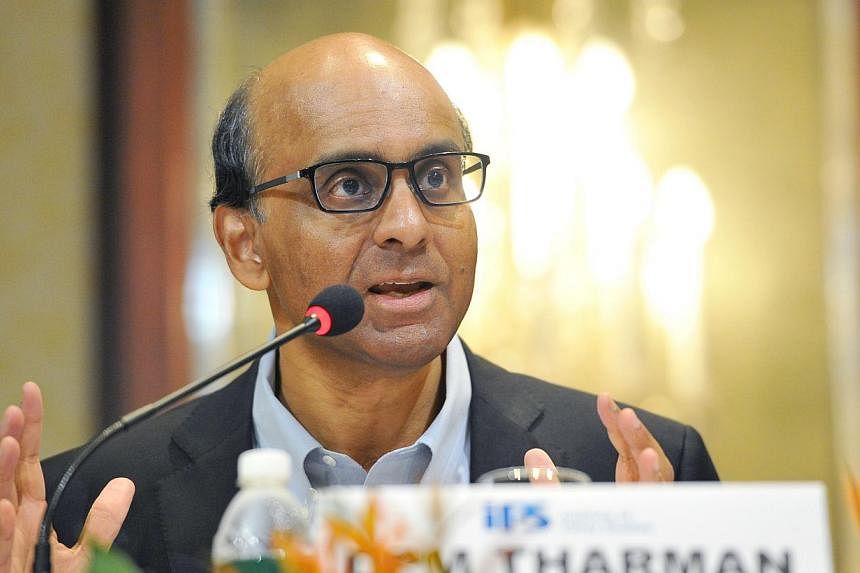SINGAPORE - Investing in private pension funds remains an option in future for CPF members who want to try and grow their savings, said Deputy Prime Minister Tharman Shanmugaratnam on Tuesday.
He acknowledged that the Government should look into how it can provide better ways for those who want to take higher risks to try and earn higher returns on their CPF savings.
Speaking at an Institute of Policy Studies forum on the Central Provident Fund and retirement adequacy, Mr Tharman said that the Government will ensure the CPF system continues to evolve so that it "adapts to new needs".
"We want to provide greater security in retirement, especially for lower-income Singaporeans. We want to help retirees meet their basic needs even as costs go up over time. And we want to help the current generation of older folk to unlock the value in their homes," he said.
Even then, he said reiterating a point he made in Parliament, the CPF system must be kept sustainable for the long term, and should give a fair return without exposing ordinary members to financial risks they cannot afford.
Risk faced by ordinary, working people is a key consideration for any social security system, he noted.
He said that when the Government looked into allowing CPF members to invest in private pension funds in 2007, it decided not to go ahead with the plan as most members then had low balances and would not be able to absorb the investment risks.
"Private pension plans will not be a walk in the park," he warned.
Mr Tharman noted that while people can, in principle, expect to earn higher returns on riskier plans over the long term, in practice, they could go through long periods of up to 15 years without seeing higher returns.
Citing the experience of Hong Kong's Mandatory Provident Fund (MPF), which allows members to choose a pension plan according to their risk appetite, Mr Tharman said that it had achieved a rate of return of 4 per cent in nominal HK dollars since its launch in 2000.
This is about the same as what CPF monies have earned in aggregate, he noted, and lower than what the CPF monies in the Special, Medisave and Retirement Accounts have earned in Singapore dollars.
And even the most aggressive fund in the HK MPF system had achieved returns of 4.5 per cent since inception, he added.
The main challenge will be for private pension plans to offer a "realistic chance" of achieving a better rate of return than the CPF Special Account rate, he said.


